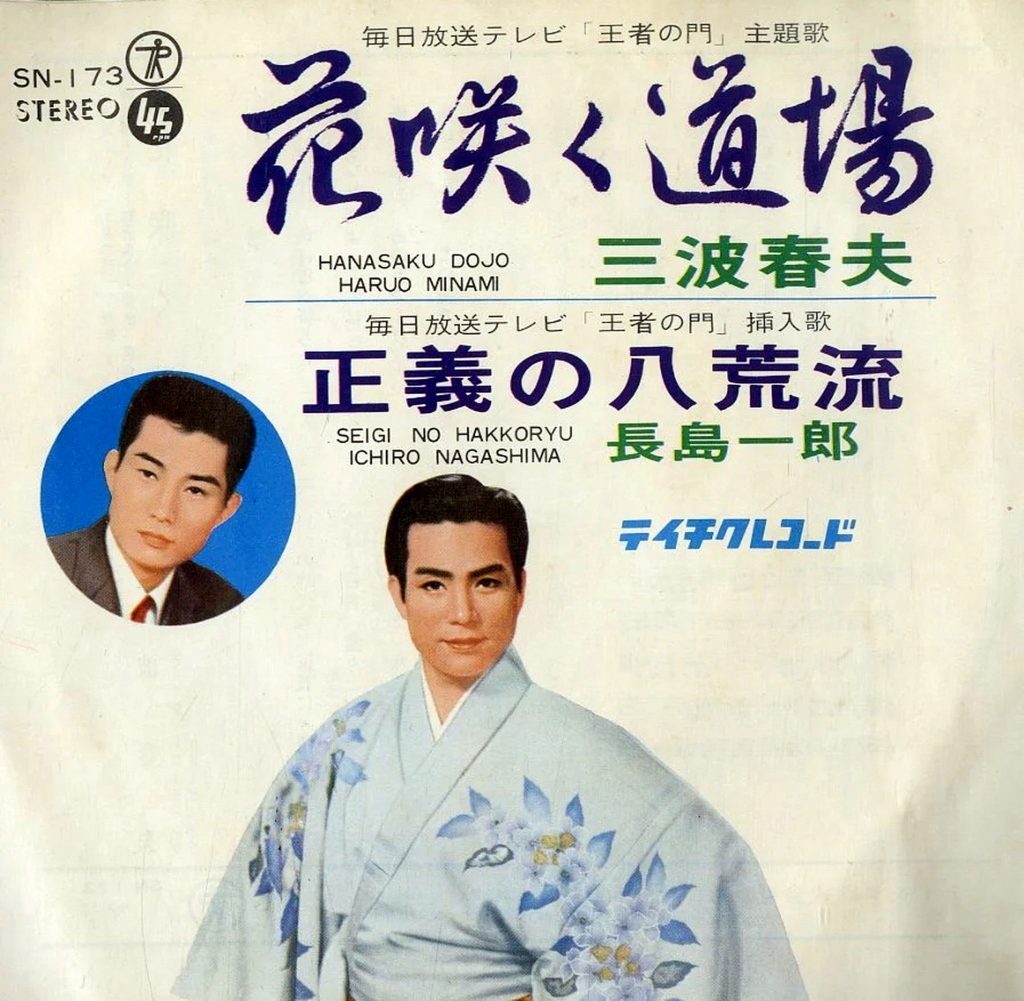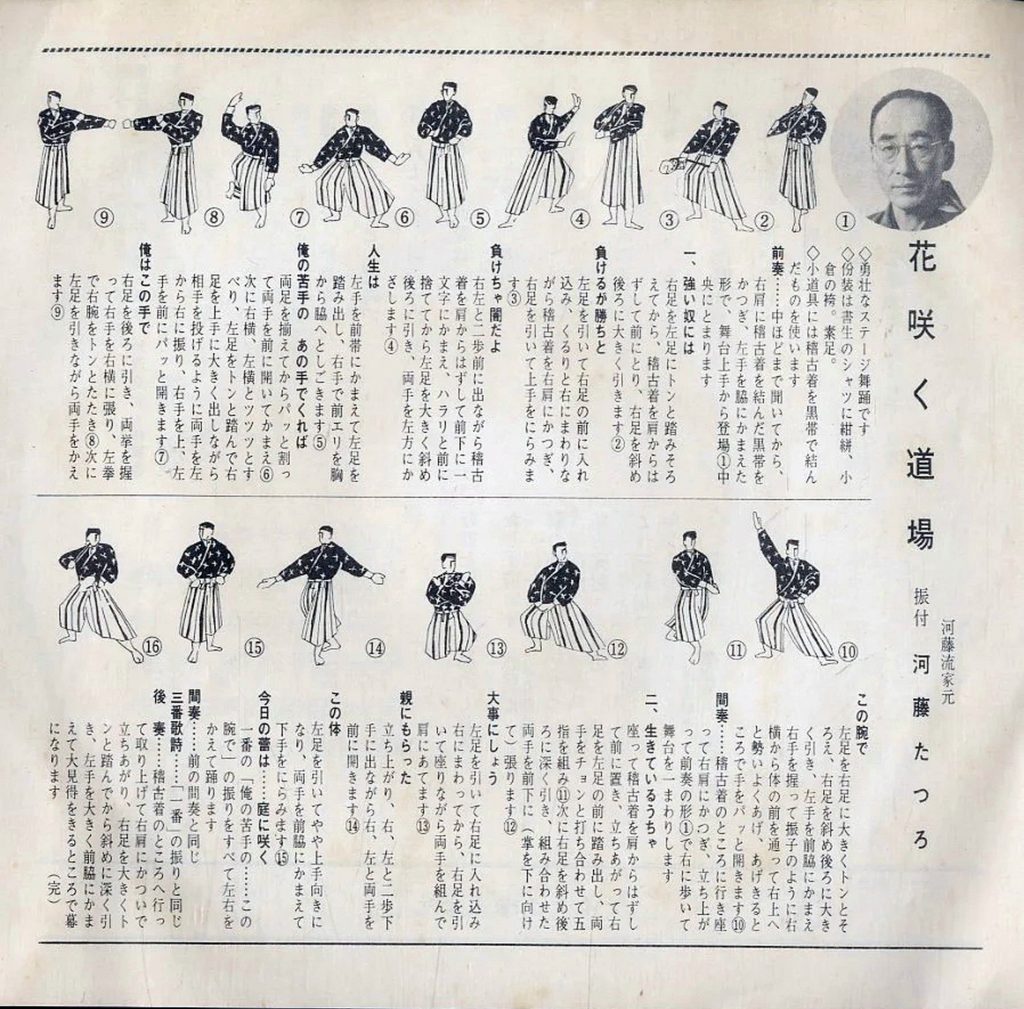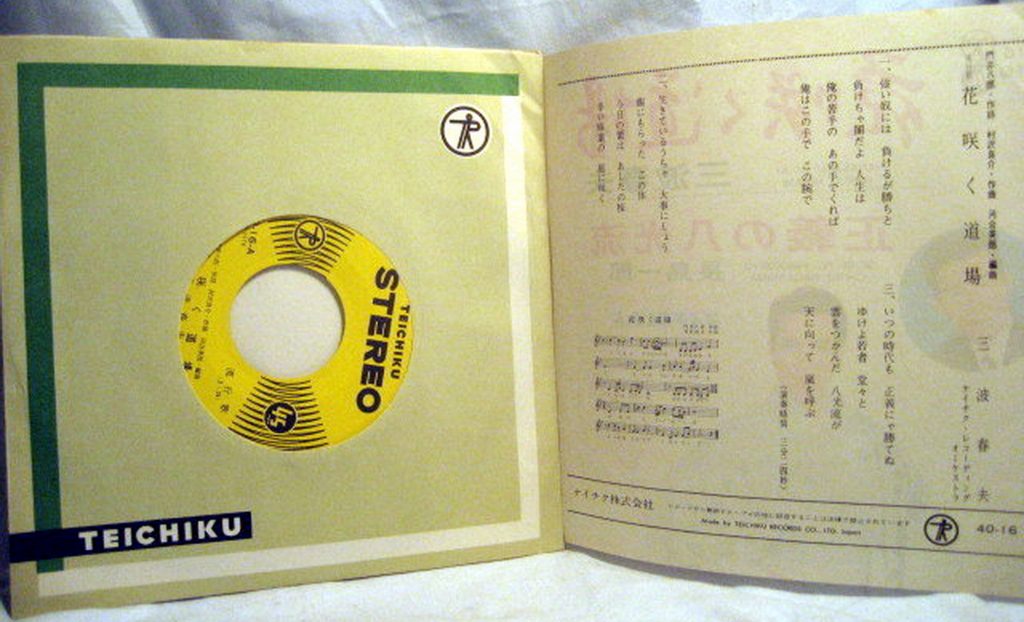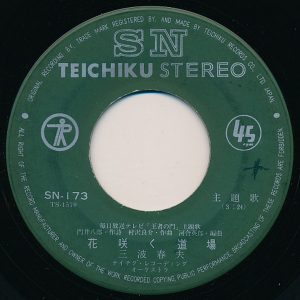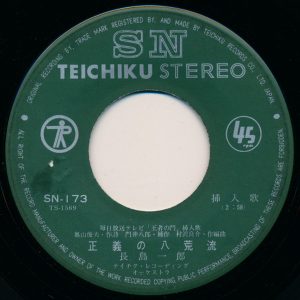The Two Songs of Hakko-ryu Jujutsu
Hanasaku Dōjō Uta 花咲く道場唄 and Seigi no Hakkō-ryū Uta 正義の八光流唄
Shodai Soke Okuyama had two very famous singers create two Rōkyoku 浪曲 traditional style Uta 唄 (songs) that are accompanied by a Shamisen to tell the “story” of Hakko-ryu Jujutsu 八光流柔術. These two songs and the dance were recorded and released on two small disks that came with a pamphlet that included the lyrics for each song.
THE TWO SONGS
- Hanasaku Dōjō Uta 花咲く道場唄 – Performed by: Minami Haruo 三波春夫. Hanasaku 花咲く means: “to bloom” or the timing when the buds burst open at the first sign of spring.
- Seigi no Hakkō-ryū Uta 正義の八光流唄 – Performed by: Nagashima Ichirō 長島一郎. Seigi 正義 means “justice” or “righteousness”. Nagashima Ichirō was also a famous movie producer who put together the old video of Okuyama Sensei. On the old video you will hear and see these two songs being performed as Okuyama Sensei demonstrates various aspects of Hakko-ryu as well as displays old photos from the founding of his system.
ABOUT THE MAIN SINGER
- Minami Haruo 三波春夫 was a famous Japanese Rōkyoku 浪曲 (wave melody) and later on Enka 演歌 singer. His real birth name was Bunji Kitazume 北詰文司. He was born July 19, 1923 and died April 14, 2001. Minami Haruo was famous for his cheerful smile and his Rōkyoku trained voice.
- In 1939 at the age of 16, Bunji debuted as a performer of Rōkyoku, a type of narrative singing, under the name Fumiwaka Nanjō 南條文若. Bunji joined the Imperial Japanese Army in 1944 and was sent to Manchuria. He was captured by the Red Army and spent four years at a prisoner of war camp near Khabarovsk. He returned to Japan in 1949 and resumed his career as a Rōkyoku singer.
- Bunji adopted his stage name “Minami Haruo” in 1957 and started performing popular music (only later would his music be classified as “Enka”, a term not in existence at the time of his debut. He attracted attention for performing while dressed in a kimono, which was unheard of for male pop singers at the time.
- Hideo Murata 村田英雄 was regarded as Minami Haruo’s rival as they both trained under the same Rōkyoku master. Among Minami’s many hit songs was “Tokyo Gorin Ondo”, the theme song of the 1964 Summer Olympics in Tokyo. It sold over one and a half million copies, and was awarded a gold disc.
ABOUT THE STYLES OF SINGING
- Rōkyoku 浪曲 also called Naniwa-bushi 浪花節 is a genre of traditional Japanese narrative singing that is generally accompanied by a Shamisen. In modern Japanese slang, “Naniwa-bushi” is sometimes used to mean “a sob story”, since the songs were often about sad subjects with a focus on obligation and compassion.
- Enka (演歌) is a popular Japanese music genre considered to resemble traditional Japanese music stylistically created later on.
Seigi no Hakkō-ryū Uta 正義の八光流唄
Performed by: Nagashima Ichirō 長島一郎 (Seigi 正義 means justice or righteousness)
- 一、栄螺のような挙骨が飛んでこようと荒縄で首しめようと 何のその暴力完封八光は咲いて徴笑む桜花
Part 1 – Sazae no yōna genkotsu ga tonde koyouto aranawa de kubishime youto nannosono bōryoku kanpū hakkō wa saite koppo emu sakuragana - 二、挑んで組みし怪傑も五体一如の使い分け飛竜の技も軽々と暴力完封八光にそよぐ五月の若葉風
Part 2 – Idonde kumishi kaiketsu mo gotai ichinyo no tsukaiwake hiryū no waza mo karugaruto bōryoku kanpū hakkō ni soyogu satsugi no wakaba kaze - 三、野郎と怒鳴るののしりもおじず迫らず悠然と鋼の腕に受けてたつ暴力完封八光のこれぞ紅葉の綾錦あやにしさ
Part 3 – Yarō to donaru nonoshiri mo ojizu semarazu yūzento hagane no ude ni ukete tatsu bōryoku kanpū hakkō no korezo mumigi no aya nishiki

